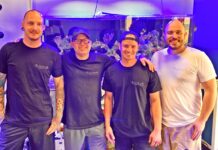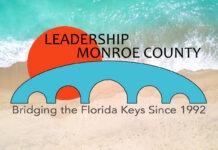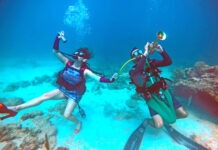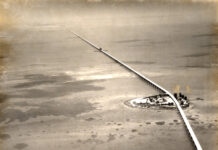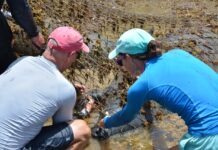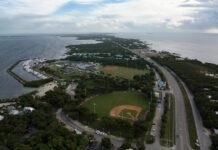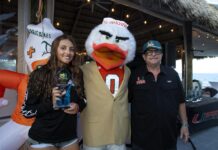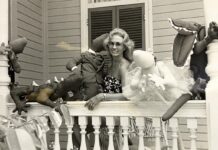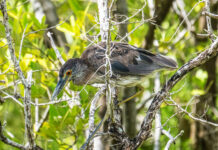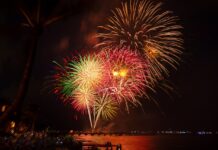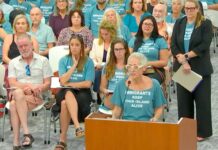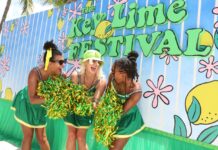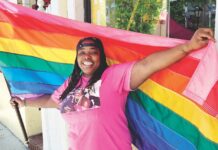When people talk about No Name Key, they rarely talk about the old Russian immigrant, called by some the King of No Name Key, or farming or the alleged trespassing disputes over homesteaded property lines. Few remember the island had a grammar school back in 1910 or how the island was nearly deserted after a 1919 hurricane swept through the Lower Keys.
Many stories about No Name Key refer to the old ferry landing and how the island lost its isolated status with the arrival of State Road 4A.
This first version of the Overseas Highway traveled a different path as it left Key West and wandered up the island chain. As the road moved across the Lower Keys, it traveled over Little Torch Key and crossed Pine Channel to Big Pine Key, where it followed the path of Watson Boulevard until it reached Bogie Channel. The bridge delivered the road to No Name Key, where it stopped terminus. State Road 4A picked back up again at Lower Matecumbe Key. The automobile ferry connecting the two ferry landings attracted visitors, and visitors attracted commerce.
In the years following the official opening of State Road 4A in 1928, commercial properties began to develop on the island. Around 1931, a general store opened, catering to those calling the island home and drivers passing through via the automobile ferry. For the fishermen, the building also operated as a bait and tackle store. The old wooden building had two floors, with the second floor initially used for storage. According to local histories, a room was added to the downstairs structure in 1936, and the business expanded to offer a restaurant and bar. It was not the last expansion the property would see.
By the decade’s end, the second floor had been reimagined as a place for a different kind of storage. The clutter had been moved out from the upstairs, and mattresses moved in. For a handful of years, the second floor was used as a brothel that was not particularly successful, for several reasons that would be more appropriately discussed at a tiki bar, over a rumrunner, than in this public forum. Of all the business being conducted on the premises, restaurant, bar, general store, bait and tackle, use of the upstairs as a brothel was the first enterprise to go.
The next facets of the business to be discontinued were the general store and tackle shop, which ceased to operate in the mid-1950s when the restaurant and bar expanded and the location became known as the No Name Pub – one of the oldest bars in the Keys. The No Name Pub and all of its iterations were not all that was happening on the island. Fishing camps and lodges, including Carlton and Grace Craig’s No Name Lodge, were developed. They purchased property on the island circa 1932 and hired a local engineer to get a crew together and build the lodge. By 1935, the lodge had a dock for boats and a filling station for the cars.
The No Name Lodge was constructed on the lot abutting State Road 4A and the ferry landing. The neighboring property was owned by Dodderidge Russell, of Key West, who had developed other properties in the Keys, including the Russell Arms Hotel on Upper Matecumbe Key. That property, developed with his brother, was advertised in the Aug. 11, 1927, edition of the Miami News. “The Russell Arms Hotel, Matecumbe Key, Fl. Home of the Bone-Fish. A modern 27-room hotel built near what is now the temporary terminus of the Oversea Highway. Sand beach bathing — deep sea fishing. Up-to-date dining room service — seafood a specialty. Ideally located for weekend patrons from Miami and Homestead. Summer Rates: $5.50 a day; $33.50 a week.”
The Russell brothers sold the property to Ed and Fern Butters circa 1931, in the general time frame of when Carlton and Grace Craig bought their piece of No Name Key. Perhaps it was within the same period that Russell, with the proceeds acquired from the transaction with the Butters on the Upper Matecumbe Key property, also purchased his lot on No Name Key.
Whatever the case, court records indicate some confusion about where exactly Craig’s No Name Lodge was built. The court ruled that the No Name Lodge was actually built on the Russell property. After a couple of years of litigation, Roland and Grace Craig remained the owners of the No Name Lodge.
Traffic to No Name Key lightened considerably with the opening of the second incarnation of the Overseas Highway in 1938 that traveled across Big Pine Key and eliminated the 40-mile gap in the highway and the ferry system operating out of No Name Key. Automobile traffic ceased after a 1948 hurricane devastated Key West and the Lower Keys — the September hurricane destroyed the wooden bridge connecting Big Pine to No Name Key. The wooden bridge was rebuilt before a fire destroyed it and isolated the island again. It was not until 1967 that the modern concrete bridge linked Big Pine to No Name Key and the island was, once again, physically connected to the outside world.
Today, the island is best known for the Key deer that wander about, and for the No Name Pub, which is still one of the oldest bars in the Florida Keys and a treat to visit, if you can find it.
